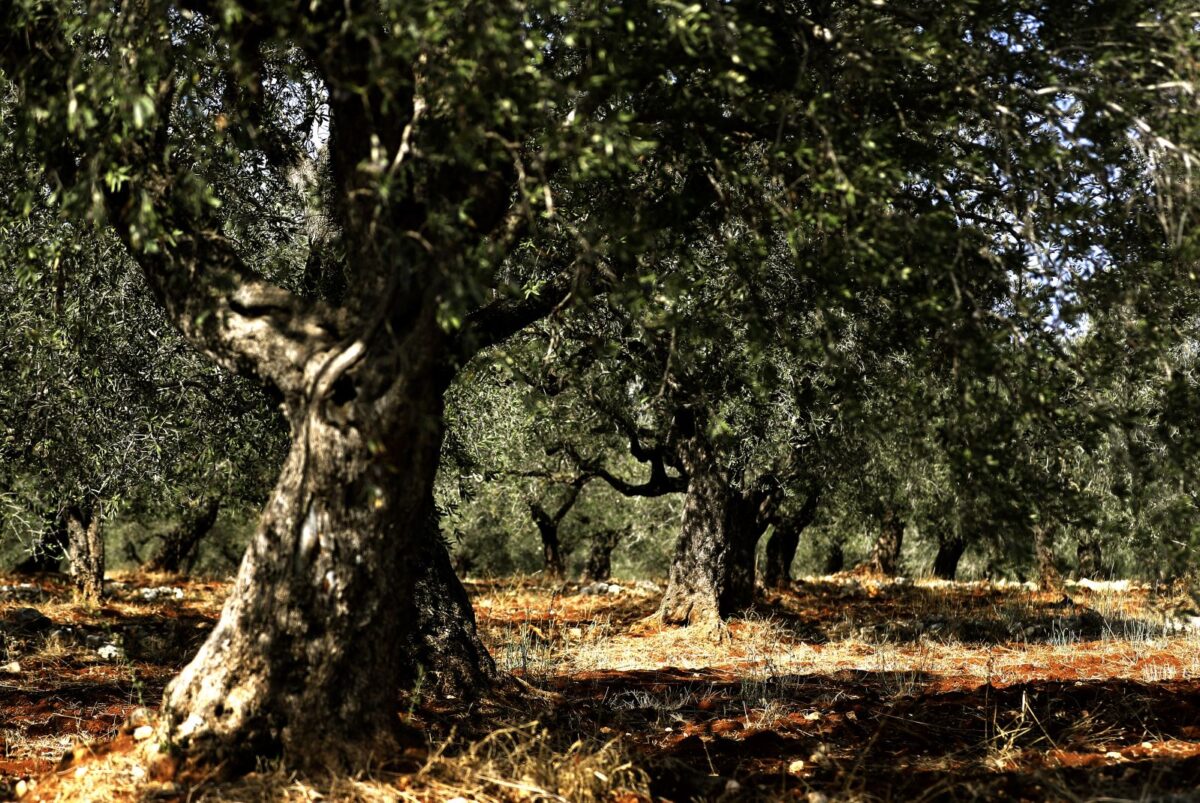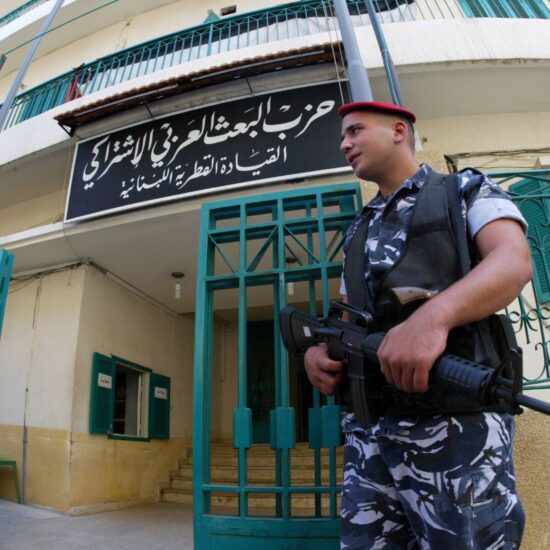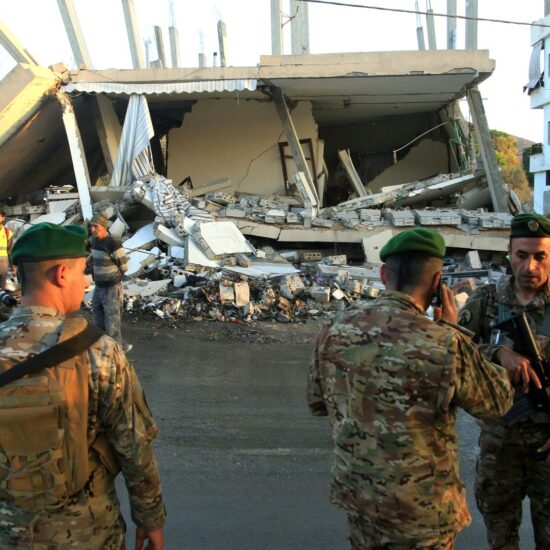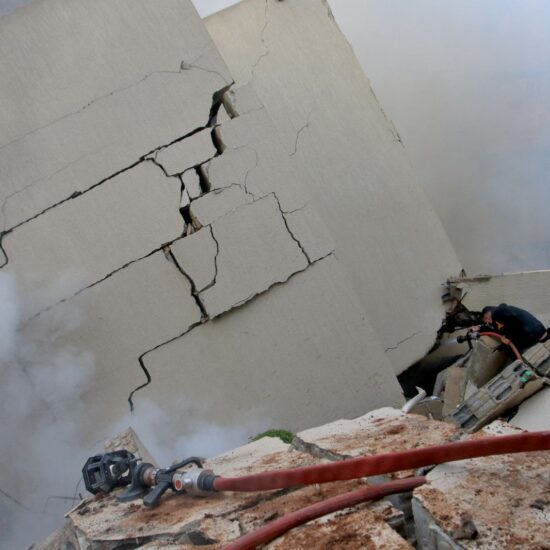
This year, the challenges facing Lebanon’s olive oil sector vary from one region to another. Prolonged drought has left its mark on olive trees across the country, compounded by unpredictable climate patterns and new environmental factors along with Israeli damage to olive trees and denied access to farmers in the south of Lebanon
A decline in production is expected nationwide, but the situation in the south is far more complex. Here, farmers are grappling with multiple crises at once. Beyond climate pressures, new diseases have appeared on olive trees, which are cases that have not been present before the war.
Many groves remain unchecked, while others have become inaccessible. Farmers who traditionally tend and harvest their olive trees along Lebanon’s southern border can no longer safely reach their land. The constant presence of Israeli drones, the risk of targeting, and the security threat imposed on villages near the Litani River have made access dangerous or impossible. Several olive groves have also been burned, adding to the devastation.
As a result, the region is witnessing a sharp decline in olive production this year, a dramatic setback for an area that once yielded abundant harvests.
Economically, the consequences are already being felt. With supply shrinking and demand steady, the price of a 16-liter tin of olive oil is expected to surge by around 50 per cent, reaching at least 150-200 US making it an increasingly expensive household staple for many Lebanese families.
Official action?
The Olive Sector Committee has addressed ways to strengthen Lebanon’s olive and olive oil sector amid counting economic, environmental and political pressures by boosting its sustainability, quality and competitiveness.
In a meeting held back in July 2025, the committee addressed four key pillars.
The meeting addressed four main priorities for the olive oil sector: tackling the growing agricultural challenges farmers face, such as rising production costs, climate impacts, and limited technical support; modernizing olive presses to meet technical and environmental standards; improving quality through stricter standards, better harvesting and storage methods, and stronger measures against fraud; and finally, enhancing marketing and promotion by expanding export opportunities, overcoming regulatory and smuggling challenges, and building a strong national brand that reflects the authenticity of Lebanese olive oil.
Safety challenges & denied access
In the southern border town of Blida, the municipality received official notice from Lebanese Army Intelligence granting residents a narrow window, from Thursday, October 16, to Monday, October 20, 2025 to access their lands and groves east of the town for olive harvesting, pruning, firewood cutting, and ploughing. These activities will take place under the protection of joint patrols from the Lebanese Army and UNIFIL to ensure the safety of farmers working in these high-risk areas.
The municipality urged residents to mobilize workers, equipment, and transportation to make full use of the limited timeframe and complete essential seasonal tasks before the window closes. Similarly, in Meiss El Jabal, authorities announced that farmers in the Toufa and Bayad areas will be escorted by the Lebanese Army, Intelligence Directorate, and UNIFIL during the olive harvest season, daily from 7:00 a.m. to 6:00 p.m. The municipality said the measure aims to safeguard farmers and orchard owners, following official coordination with the Lebanese Army.
These exceptional security arrangements reflect the tense reality along Lebanon’s southern border, where heightened military measures are being enforced to protect both the agricultural season and farmers’ movements due to the presence of IDF forces in some border villages. For many villages in the south, this short harvest season is their main source of annual agricultural income.
But even with these precautions, danger remains present. In the town of Haris, Bint Jbeil district, an Israeli drone struck two civilians who were pruning trees on the outskirts of the village, injuring them and sending them to Tebnin Governmental Hospital for treatment.
Direct damage to the land
Phosphorus bombs ignited massive fires that wiped out thousands of centuries-old trees, rendering them unproductive for years to come.
Farmers and agricultural experts caution that recovering from this environmental and agricultural disaster will take significant time and investment. The damage threatens local food security and piles further economic pressure on already struggling communities.
Each year, the harvest generates thousands of seasonal jobs, from picking olives to operating presses scattered across the south and the Beqaa. But this year, the damage extends far beyond domestic production. “The destruction has not only affected Lebanon’s interior,” Mohammad Al-Husseini, head of the Southern Farmers’ Syndicate told NOW.
It has also disrupted olive oil exports that used to meet the needs of Lebanese expatriate communities in Arab countries and the Americas, creating serious economic repercussions in the short and medium term, according to Mohammad.
Entire villages, particularly those near the border, have been flattened by air strikes.
The south produces 38 per cent of Lebanon’s olives and around 5,000 tons of olive oil annually, nearly a fifth of the national output of 25,000 tons. In financial terms, insecurity threatens roughly $23 million in olive oil revenues, as Israeli warnings have kept farmers away from their fields for the past two years, paralyzing both domestic sales and export activity.
White phosphorus bombs, in particular, are expected to have caused deep, lasting damage to the soil and ecosystems. By late August, 96 wildfires had destroyed more than 7.2 million square meters of forests, farmland, and olive groves. Over 60,000 olive trees and more than 5,000 other trees, including oak and more than 55 per cent of pine trees have been wiped out.
Climate change challenges
Lebanese olive trees, many of which are centuries old with an average age of 150 years, rely almost entirely on rainfall rather than irrigation. Olive cultivation covers 5.4 per cent of Lebanon’s total land area, with a planting density of around 207 trees per 10,000 m².
But this deeply rooted tradition faces an existential threat. Climate change, manifesting through prolonged droughts and rising temperatures is already reshaping olive cultivation.
A Nature Plants study projects that rising temperatures and declining rainfall will make much of southern Lebanon and Nabatieh unsuitable for olive production by 2100, unless new technologies or drought-resistant varieties are adopted. Warmer conditions could also lower yields in the north and Mount Lebanon, while the east is expected to remain unsuitable for efficient cultivation.
Rodayna Raydan is a Lebanese-British journalist. You can follow her on Twitter @Rodayna_462
The views in this story reflect those of the author alone and do not necessarily reflect the beliefs of NOW.








